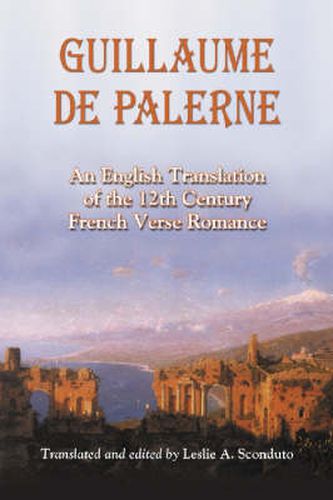Readings Newsletter
Become a Readings Member to make your shopping experience even easier.
Sign in or sign up for free!
You’re not far away from qualifying for FREE standard shipping within Australia
You’ve qualified for FREE standard shipping within Australia
The cart is loading…






This title is printed to order. This book may have been self-published. If so, we cannot guarantee the quality of the content. In the main most books will have gone through the editing process however some may not. We therefore suggest that you be aware of this before ordering this book. If in doubt check either the author or publisher’s details as we are unable to accept any returns unless they are faulty. Please contact us if you have any questions.
This popular and important romance in the Middle Ages was written in Picard, one of the more difficult regional dialects of Old French. Guillaume de Palerne is a non-Arthurian romance offering a different vision of the medieval world, one in which we find the hero in a more realistic setting confronting the obstacles that fate - not his quest for fame - has set in his path. It is the story of a young prince of Sicily who is kidnapped by a werewolf at the age of four. Woven into the story of the eponymous hero is the parallel story of Alphonse, the Spanish prince who was transformed into a werewolf by his stepmother when he was still a toddler. The anonymous poet has woven humor, contemporary allusions, reworkings of traditional motifs and a hidden moral lesson into the story’s engaging plot. The romance also presents the reader and scholar with a complex portrayal of the constancy and changeability of identity that provides new insight into the medieval attitude toward individuality. Based primarily on Alexandre Micha’s 1990 edition, this translation is intended as a guide to reading the original rather than as a substitute. The editor has attempted to be as literal as possible and to remain faithful to the register and tone of the original, including its original word order and grammatical structure. In addition to the translation, the finished text includes an introduction, notes and a select bibliography.
$9.00 standard shipping within Australia
FREE standard shipping within Australia for orders over $100.00
Express & International shipping calculated at checkout
This title is printed to order. This book may have been self-published. If so, we cannot guarantee the quality of the content. In the main most books will have gone through the editing process however some may not. We therefore suggest that you be aware of this before ordering this book. If in doubt check either the author or publisher’s details as we are unable to accept any returns unless they are faulty. Please contact us if you have any questions.
This popular and important romance in the Middle Ages was written in Picard, one of the more difficult regional dialects of Old French. Guillaume de Palerne is a non-Arthurian romance offering a different vision of the medieval world, one in which we find the hero in a more realistic setting confronting the obstacles that fate - not his quest for fame - has set in his path. It is the story of a young prince of Sicily who is kidnapped by a werewolf at the age of four. Woven into the story of the eponymous hero is the parallel story of Alphonse, the Spanish prince who was transformed into a werewolf by his stepmother when he was still a toddler. The anonymous poet has woven humor, contemporary allusions, reworkings of traditional motifs and a hidden moral lesson into the story’s engaging plot. The romance also presents the reader and scholar with a complex portrayal of the constancy and changeability of identity that provides new insight into the medieval attitude toward individuality. Based primarily on Alexandre Micha’s 1990 edition, this translation is intended as a guide to reading the original rather than as a substitute. The editor has attempted to be as literal as possible and to remain faithful to the register and tone of the original, including its original word order and grammatical structure. In addition to the translation, the finished text includes an introduction, notes and a select bibliography.